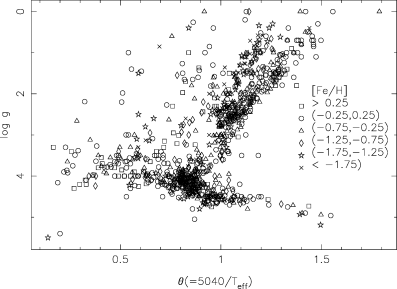 | |||
|
| Home > Public Information > Scientific Highlights > 2006 > The Medium-Resolution Isaac Newton Telescope Library of Empirical Spectra |
|
The Medium-Resolution Isaac Newton Telescope Library of Empirical Spectra | ||
|
INT+IDS
A project aimed at improving the existing tools for extracting stellar population information using the optical region of composite spectra was started by a team of astronomers mainly using IDS spectrograph on the Isaac Nerwton Telescope. Although the main motivation of this work was to use this new calibration to study the stellar content of galaxies using spectra of unresolved stellar populations, it was anticipated that the material could also be useful in other areas of astronomy. This included a new stellar library (MILES – the Medium-resolution Isaac newton telescope Library of Empirical Spectra), a set of homogeneous atmospheric parameters, a redefinition and recalibration of spectral-line indices, empirical fitting functions describing the behaviour of indices with stellar parameters, and stellar population model predictions. A comprehensive spectral library with medium-to-high resolution and a good coverage of the Hertzsprung–Russell (HR) diagram is an essential tool in several areas of astronomy. In particular, this is one of the most important ingredients of stellar population synthesis, providing the behaviour of individual stellar spectra as a function of temperature, gravity and chemical abundances. Unfortunately, the empirical libraries included in this kind of models up to now contained few stars with non-solar metallicities, compromising the accuracy of predictions at low and high metallicities. This problem has usually been partially solved by using empirical fitting functions, polynomials that relate the stellar atmospheric parameters (Teff, log g, and [Fe/H]) to measured equivalent widths. These functions allow the inclusion of any star required by the model (but within the stellar atmospheric parameter ranges covered by the functions), using a smooth interpolation. However, the new generation of stellar population models go beyond the prediction of individual features for a simple stellar population (SSP), and they attempt to synthesize full spectral energy distributions (SEDs). In this case, the fitting functions cannot be used, and a library of stars covering the full range of atmospheric parameters in an ample and homogeneous way was urgently demanded. Moreover, although the evolutionary synthesis codes do not require absolute fluxes, the different stellar spectra must be properly flux calibrated in a relative sense so that the whole SED can be modelled. This, however, is quite difficult to achieve in practice, due to the wavelength-dependent flux losses caused by differential refraction when a narrow slit is used in order to obtain a fair spectral resolution. Another important caveat in the interpretation of the composite spectrum of a given galaxy is the difficulty of disentangling the effects of age and metallicity. Due to blending effects, this problem is worsened when working at low spectral resolution, as it is the case when low-resolution stellar libraries are used. There are a few studies that have attempted to include spectrum features at higher resolution. However, predicting such high-dispersion SEDs is very difficult owing to the unavailability of a library with the required input spectra. Whilst the new generation of large telescopes are already gathering high-quality spectra for low- and high-redshift galaxies, the stellar population models suffer from a lack of extensive empirical stellar libraries to successfully interpret the observational data. At the moment, the available stellar libraries have important shortcomings, such as small number of stars, poor coverage of atmospheric parameters, narrow spectral ranges, low-resolution and non-flux-calibrated response curves. The MILES library overcomes some of the limitations of the previous libraries. The new library covers the spectral range 3525–7500 Å , at spectral resolution of 2.3 Å [full width at half-maximum (FWHM)]. The spectra of 985 stars with metallicities ranging from [Fe/H] ? ?2.7 to +1.0 and a wide range of temperatures were obtained using IDS spectrograph on the INT over a total 25 nights in 5 different runs.
References:
|
| Top | Back |
|


